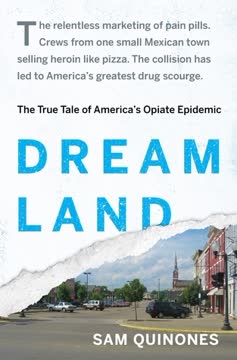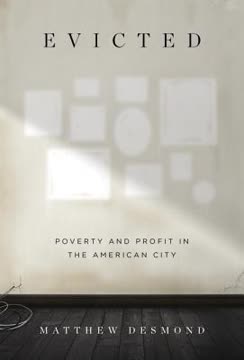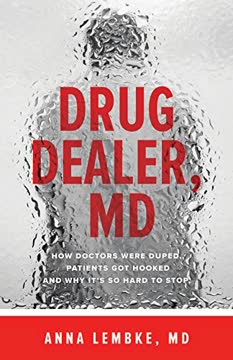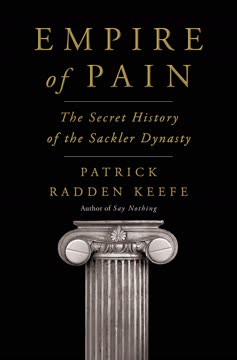Key Takeaways
1. Portsmouth's Dreamland: A Microcosm of American Decline
Memories of Dreamland, drenched in the smell of chlorine, Coppertone, and french fries, were what almost everyone who grew up in Portsmouth took with them as the town declined.
Golden Age memories. Portsmouth, Ohio, once a thriving blue-collar town with bustling factories and a vibrant community centered around the Dreamland swimming pool, represents a nostalgic vision of mid-20th century America. This era fostered a sense of community and shared prosperity, where class distinctions blurred, and recreation was accessible to all.
Economic downturn. The decline of Portsmouth mirrors the broader Rust Belt narrative, marked by factory closures, job losses, and a shrinking population. Globalization, competition, and cheaper labor in other countries led to the collapse of the town's industrial base, leaving behind abandoned buildings and a sense of despair.
Two Portsmouths. Today, two realities exist: the physical town of abandoned buildings and the idealized memories of a better time. Dreamland, with its chlorine scent and carefree summers, symbolizes the lost prosperity and community spirit that once defined Portsmouth, a stark contrast to the present-day struggles.
2. The Xalisco Boys: Innovators in Heroin Retail
Those who worked hard and honestly got left behind. Only those with power and money could insist on decent treatment.
From Sugarcane to Heroin. The Xalisco Boys, young men from a small, impoverished sugarcane-farming region in Mexico, revolutionized the heroin trade by applying a retail business model. This system, based on convenience, customer service, and a readily available workforce, transformed the drug market in numerous U.S. cities.
Franchise Model. The Xalisco Boys operated like a fast-food franchise, with cell owners supplying heroin to drivers who delivered it directly to customers. This "pizza delivery" approach eliminated the need for addicts to visit dangerous neighborhoods, making heroin accessible to a wider, often middle-class, clientele.
Key characteristics:
- Non-violent
- No use of guns
- Strict adherence to business principles
- Focus on customer service
- Targeting white, middle-class users
3. The Pain Revolution: A Double-Edged Sword
The patient, it held, was always right, particularly when it came to pain. The doctor was to believe a patient who said he was in pain.
A Shift in Medical Thought. The late 20th century saw a revolution in pain management, driven by the belief that pain was undertreated and that patients had a right to relief. This movement, fueled by the hospice movement and the WHO Ladder, led to a more liberal use of opiate painkillers.
Unintended Consequences. While intended to alleviate suffering, the pain revolution inadvertently created a perfect storm for opiate abuse. The emphasis on patient autonomy, combined with aggressive pharmaceutical marketing, led to overprescribing and a surge in addiction.
The WHO Ladder:
- Opiates should be used to deal with terminally ill patients on whom nonopiates did not work.
- Doctors should believe a patient who said he was in pain and prescribe accordingly.
4. Arthur Sackler's Legacy: Marketing and the Morphine Molecule
[Arthur Sackler] showed the industry “that amazing things can be achieved with direct selling and intensive direct advertising.”
Revolutionizing Drug Advertising. Arthur Sackler transformed pharmaceutical marketing with his innovative campaigns for drugs like Terramycin and Valium. His emphasis on direct doctor contact, aggressive advertising, and the creation of a need for the product set a new standard for the industry.
Valium's Double Edge. While Sackler's marketing genius made Valium a blockbuster drug, it also highlighted the potential dangers of promoting drugs for vague symptoms without addressing the underlying causes. This approach paved the way for the marketing of painkillers like OxyContin.
Sackler's Strategies:
- Direct doctor contact
- Free samples
- Multi-page color ads in medical journals
- Glossy monthly magazines with stories about well-known doctors
5. The Xalisco Boys' Secret Weapon: Exploiting Addiction and the American Dream
They were all from the same town.
Ranchero Roots. The Xalisco Boys' success stemmed from their unique combination of small-town connections, a strong work ethic, and a ruthless understanding of the American Dream. They were driven by the desire to escape poverty and return home as successful entrepreneurs.
The American Dream, Twisted. The Xalisco Boys' version of the American Dream involved exploiting addiction for profit, building lavish houses back home, and displaying their newfound wealth to those they had left behind. This twisted ambition fueled their relentless pursuit of new markets and customers.
Key Factors:
- Strong family and community ties
- Desire to escape poverty
- Ruthless business acumen
- Exploitation of vulnerable individuals
6. OxyContin's Rise: A Perfect Storm of Marketing and Misinformation
We Realized This Is Corporate
Purdue's Aggressive Marketing. Purdue Pharma aggressively marketed OxyContin, downplaying its addictive potential and promoting it for a wide range of pain conditions. This campaign, combined with the pain revolution, led to a surge in prescriptions and a growing pool of opiate-dependent individuals.
The Porter and Jick Myth. The misinterpretation of a one-paragraph letter to the editor became a cornerstone of Purdue's marketing strategy, falsely claiming that addiction was rare in patients treated with narcotics. This misinformation helped to assuage doctors' concerns and fuel the overprescribing of OxyContin.
The Perfect Storm:
- Aggressive pharmaceutical marketing
- Misinformation about addiction
- A medical culture focused on pain relief
- A vulnerable population seeking escape from economic hardship
7. The Internet of Dope: How the Xalisco Boys Leveraged Technology
Delivered Like Pizza
Modernizing Heroin Sales. The Xalisco Boys revolutionized the heroin trade by adopting a delivery system that resembled a fast-food franchise. This approach, combined with the use of cell phones and pagers, allowed them to reach a wider customer base and operate with greater efficiency.
The Delivery System:
- Telephone operators taking orders
- Drivers delivering heroin in balloons
- Meeting points in suburban parking lots
- Quick, discreet transactions
Exploiting Methadone Clinics. The Xalisco Boys strategically targeted methadone clinics, offering free samples to clients and recruiting them as guides to new markets. This allowed them to tap into a ready-made population of opiate addicts and expand their reach across the country.
8. The Human Cost: Families Torn Apart by Addiction
A Parent’s Soul Pain
A Silent Epidemic. The opiate epidemic has ravaged families across America, leaving behind a trail of broken relationships, financial ruin, and shattered dreams. The stigma associated with addiction often prevents families from seeking help or speaking out, perpetuating the cycle of silence and shame.
The Addict's Transformation. Opiate addiction can transform individuals into unrecognizable versions of themselves, driven by a relentless craving for the drug. Lying, stealing, and betrayal become commonplace as addicts sacrifice everything in pursuit of their next fix.
The Ripple Effect:
- Financial ruin
- Emotional distress
- Family breakdown
- Loss of trust
- Increased crime
9. The Search for Solutions: Treatment, Prevention, and a New Perspective
The Treatment Is You
A Multifaceted Approach. Addressing the opiate epidemic requires a comprehensive approach that includes prevention, treatment, and harm reduction strategies. This includes educating the public about the risks of opiates, expanding access to treatment and recovery services, and promoting responsible prescribing practices.
The Importance of Community. Building strong communities and providing support networks for individuals struggling with addiction is crucial for long-term recovery. This includes creating safe spaces for addicts to share their experiences, access resources, and find hope for a better future.
Key Strategies:
- Education and awareness campaigns
- Increased access to treatment and recovery services
- Responsible prescribing practices
- Community-based support networks
- Harm reduction strategies
10. The Opiate Epidemic: A Reflection of American Excess
What pain?
A Culture of Comfort. The opiate epidemic is a symptom of a larger societal problem: a culture that prioritizes comfort and instant gratification over resilience and long-term well-being. This has led to a reliance on quick fixes and a reluctance to address the underlying causes of pain and suffering.
The American Dream, Distorted. The pursuit of the American Dream, with its emphasis on material success and individual achievement, has created a pressure cooker environment that can lead to stress, anxiety, and a sense of emptiness. Opiates offer a temporary escape from these pressures, but ultimately lead to a deeper sense of despair.
A Call for Change:
- Re-evaluate societal values
- Promote resilience and coping skills
- Address the root causes of pain and suffering
- Foster a sense of community and connection
Last updated:
FAQ
What is Dreamland: The True Tale of America's Opiate Epidemic by Sam Quinones about?
- Comprehensive epidemic history: The book traces the origins, spread, and impact of America’s opiate epidemic, focusing on the intersection of prescription painkiller abuse and the rise of black tar heroin from Xalisco, Mexico.
- Interwoven narratives: It combines personal stories from addicts, families, law enforcement, and traffickers, showing how small-town America and a Mexican village became linked by the drug trade.
- Systemic analysis: Quinones explores medical, social, and economic factors, including changes in pain treatment, pharmaceutical marketing, and the decline of industrial towns.
Why should I read Dreamland by Sam Quinones?
- Deep understanding of the crisis: The book offers a nuanced, well-researched account of how prescription opioids and heroin combined to create a national epidemic.
- Humanizes addiction: Through vivid personal stories, it brings to life the struggles of addicts, families, and communities, making the crisis relatable and urgent.
- Hopeful perspective: Beyond devastation, Dreamland highlights recovery efforts, community resilience, and policy changes, offering hope for solutions.
What are the key takeaways from Dreamland by Sam Quinones?
- Interconnected causes: The epidemic resulted from aggressive pharmaceutical marketing, shifts in medical practice, economic decline, and innovative drug trafficking.
- Prescription opioids as gateway: Most heroin addicts started with prescription painkillers, which led to heroin use as pills became scarce or expensive.
- Community and systemic change: Recovery requires community engagement, honest dialogue, and reforms in healthcare, law enforcement, and social support systems.
Who are the Xalisco Boys in Dreamland and why are they important?
- Origin and identity: The Xalisco Boys are heroin traffickers from Xalisco, Nayarit, Mexico, often young men from ranchero families seeking better lives.
- Innovative distribution model: They pioneered a pizza-delivery style system for black tar heroin, emphasizing customer service, reliability, and nonviolence.
- Nationwide impact: Their decentralized, franchise-like network expanded heroin markets into new areas, especially white, middle-class communities, fueling the epidemic’s growth.
How did Purdue Pharma and OxyContin contribute to the opiate epidemic according to Dreamland?
- Aggressive marketing: Purdue Pharma promoted OxyContin as a safe, nonaddictive painkiller, using misleading data and targeting high-prescribing doctors.
- Normalization of opioid use: Their campaign led to widespread, liberal opioid prescribing for chronic pain, making high-dose opioids easily accessible.
- Gateway to heroin: OxyContin’s abuse potential and cost drove many users to heroin, intensifying the epidemic as black tar heroin became more available.
What was the "pain revolution" described in Dreamland by Sam Quinones?
- Shift in medical attitudes: The pain revolution was a movement to treat pain aggressively with opioids, based on the belief that addiction was rare among pain patients.
- Influence of flawed research: A misinterpreted 1980 letter by Dr. Hershel Jick and advocacy by pain specialists promoted opioid use despite limited evidence.
- Consequences: This led to widespread opioid prescribing, inadequate monitoring, and a surge in addiction and overdose deaths.
What is the significance of the Porter and Jick letter in Dreamland by Sam Quinones?
- Original context: The 1980 letter reported low addiction rates among hospitalized patients given narcotics, but was brief and limited in scope.
- Widespread misinterpretation: It was cited as proof that opioids were safe for chronic pain, fueling overprescribing and destigmatizing opioid use.
- Lasting impact: The letter’s misuse became a cornerstone of the pain treatment revolution, contributing significantly to the epidemic.
How did the pill mill phenomenon develop in Dreamland and what was its impact?
- Definition and origin: Pill mills were cash-only pain clinics prescribing large quantities of opioids with minimal oversight, pioneered by doctors like David Procter in Ohio.
- Business model: These clinics operated with high patient volumes, short visits, and aggressive prescribing, attracting addicts from wide areas.
- Devastating consequences: Pill mills fueled widespread addiction, overdose deaths, and community destabilization, especially in the Rust Belt and Appalachia.
How does Dreamland by Sam Quinones describe the connection between prescription opioid abuse and heroin addiction?
- Prescription opioids as gateway: Most heroin users began with painkillers like OxyContin, developing tolerance and seeking heroin as a cheaper, more accessible alternative.
- Market “tenderizing”: The spread of prescription opioids made new communities vulnerable, paving the way for heroin’s arrival.
- Demographic shift: Heroin addiction spread into white, suburban, and rural areas previously untouched by the drug.
What role do parents and families play in the narrative of Dreamland by Sam Quinones?
- Silent suffering: Many families hid their children’s addiction due to stigma, contributing to the epidemic’s invisibility.
- Activism and advocacy: Some parents became vocal advocates, forming groups to raise awareness and support recovery efforts.
- Emotional toll and resilience: The book highlights both the profound grief and the hope that comes from community and openness.
What law enforcement and legal strategies are discussed in Dreamland by Sam Quinones to combat the epidemic?
- Federal investigations: Operations like Tar Pit and Black Gold Rush targeted the Xalisco Boys’ networks, leading to mass arrests but limited long-term disruption.
- Len Bias prosecutions: Prosecutors used laws holding dealers responsible for overdose deaths to build cases and encourage cooperation.
- Adapting strategies: Law enforcement had to rethink traditional approaches, focusing on collaboration and understanding new trafficking models.
What is the significance of the “Holy Grail” in the context of pain treatment in Dreamland by Sam Quinones?
- Quest for nonaddictive painkillers: Researchers long sought a painkiller that relieved suffering without causing addiction, influencing drug development and policy.
- Timed-release formulations: Drugs like MS Contin and OxyContin were seen as breakthroughs, promising steady pain relief with less risk.
- Irony and outcome: Despite these advances, addiction risk remained high, and the search for a truly nonaddictive painkiller remains unfulfilled.
Review Summary
Dreamland is a meticulously researched exposé of America's opioid epidemic, blending investigative journalism with personal stories. Quinones explores the convergence of pharmaceutical marketing, economic decline, and Mexican heroin trafficking that fueled the crisis. While praised for its depth and importance, some readers found the book repetitive. It reveals how prescription painkillers and cheap heroin devastated communities, particularly in the Midwest. The author's compelling narrative style and extensive research make this a powerful, eye-opening account of a national tragedy that continues to unfold.
Similar Books
Download PDF
Download EPUB
.epub digital book format is ideal for reading ebooks on phones, tablets, and e-readers.








